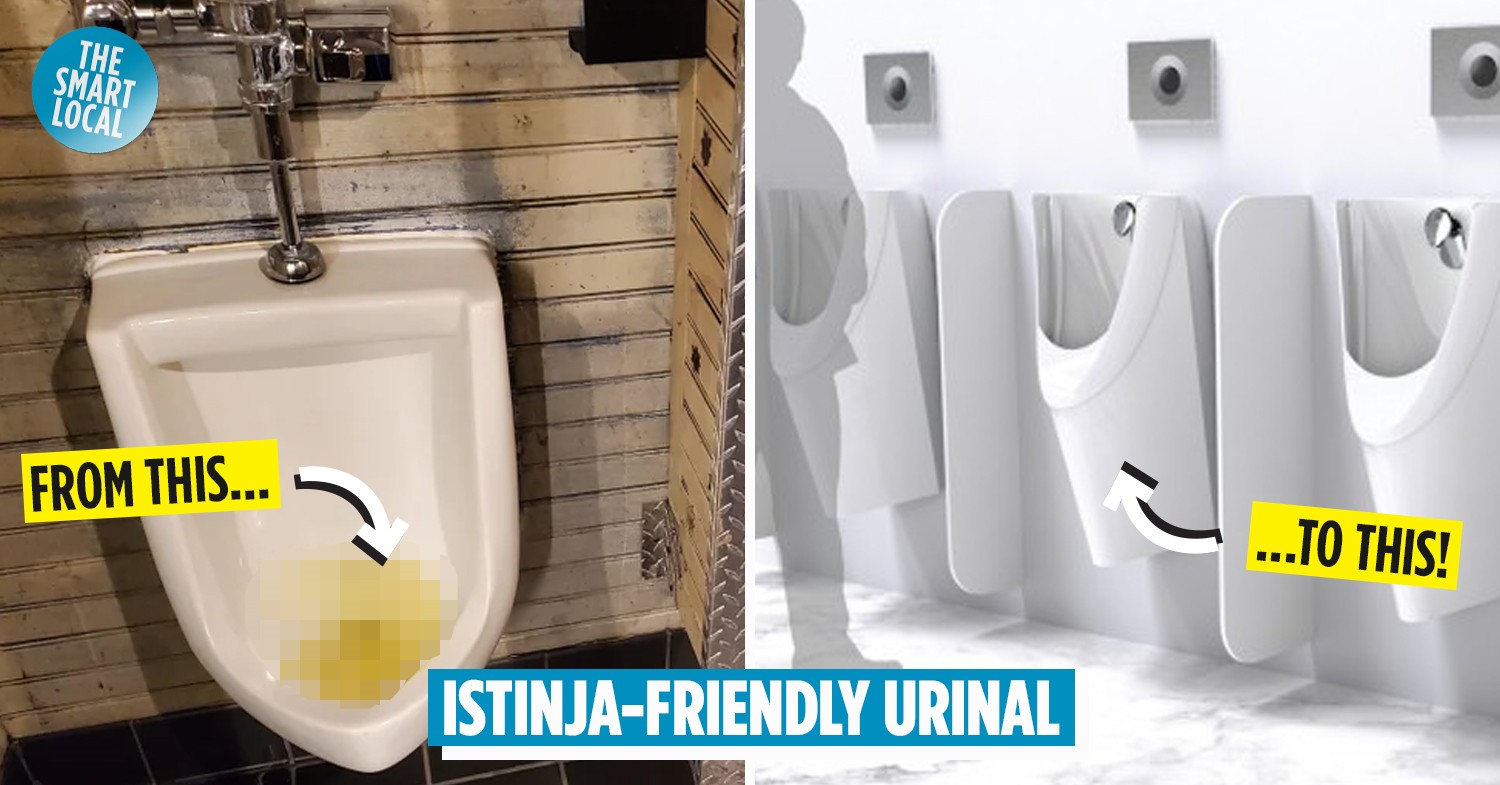Istinja-friendly urinal developed in Indonesia
Muslims across the world are familiar with wudhu – a cleansing ritual that includes washing the face, arms, head, and feet before prayer. As urinating is widely considered to invalidate wudhu, many rinse with water after peeing as well in an act called istinja, meaning to clean oneself after urination, defecation, or contact with impurities as part of one’s pre-prayer ablutions.
However, when you’re out and about and your only place for a post-pee rinse happens to be a public toilet, it’s low-key annoying when its urinals leave much to be desired.
Enter the istinja-friendly urinal, co-developed by designers from bathroom and furniture product company Kohler and Somia Customer Experience, a South Jakarta-based design team.
Because preparing for prayer in public toilets isn’t easy
Designed specially for Muslim public toilet users, and developed over 3 years with feedback from Muslim experts, architects, designers, and laypeople, the istinja-friendly urinal was a response to loo-goers’ common pet peeves with public urinals in Indonesia.
Even in the most modern, spacious restrooms, many Western-designed urinals here are only meant to flush pee, lacking a convenient cleansing function.
As a result, many a man has been splashed with droplets from an overenthusiastic flush mechanism, causing impurities to accidentally drip onto his clothing. While this would get on anyone’s nerves no matter their religion, it also invalidates a Muslim’s wudhu – meaning he’d have to start his cleansing ritual all over again.
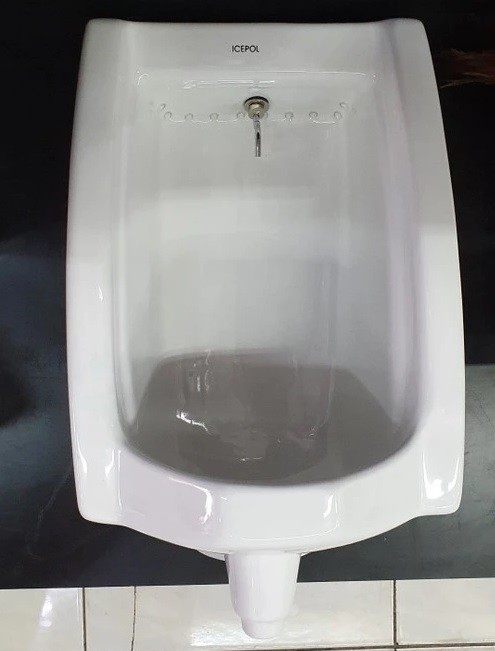
A urinal with a metal water spout
Image adapted from: Tokopedia
Some urinal designs in Indonesia also include a metal water spout that functions as a cleansing bidet, but that often releases a water stream that’s too weak or too strong, especially when the building’s plumbing system isn’t calibrated properly. What’s worse is that old urinal spouts are sometimes rusty, polluting the water meant for cleansing oneself.
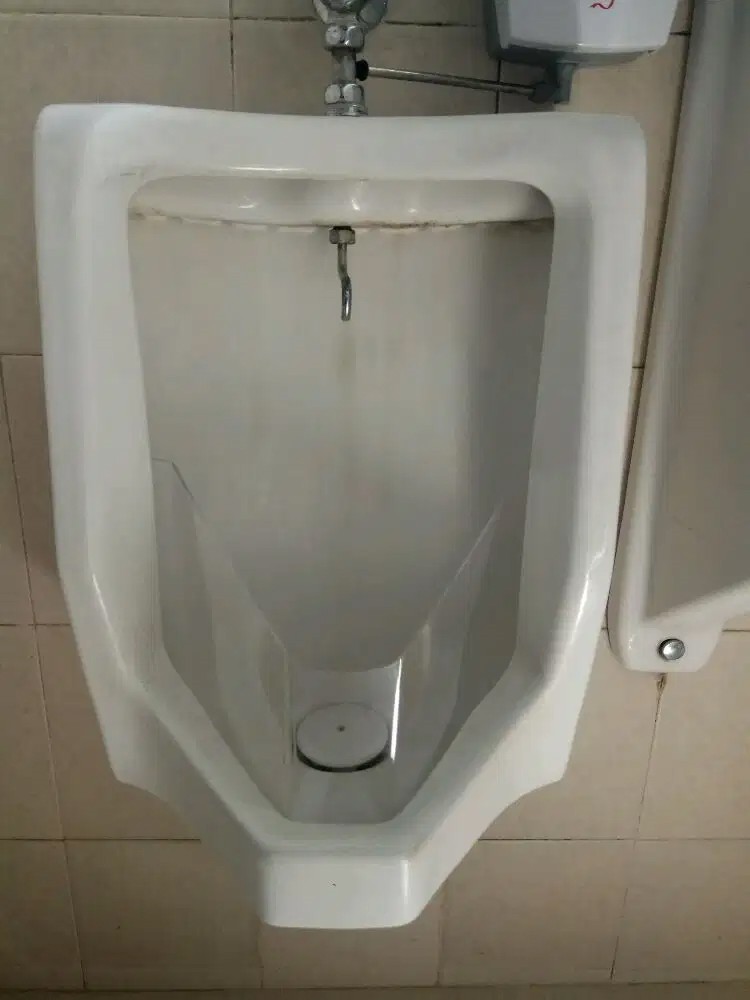
Another urinal with both a metal water spout and a transparent urinal shield
Image adapted from olx.co.id
Urinal shields are a uniquely Indonesian phenomenon that help keep pee where it’s supposed to go – but require the user to manoeuvre awkwardly just to avoid splashes.
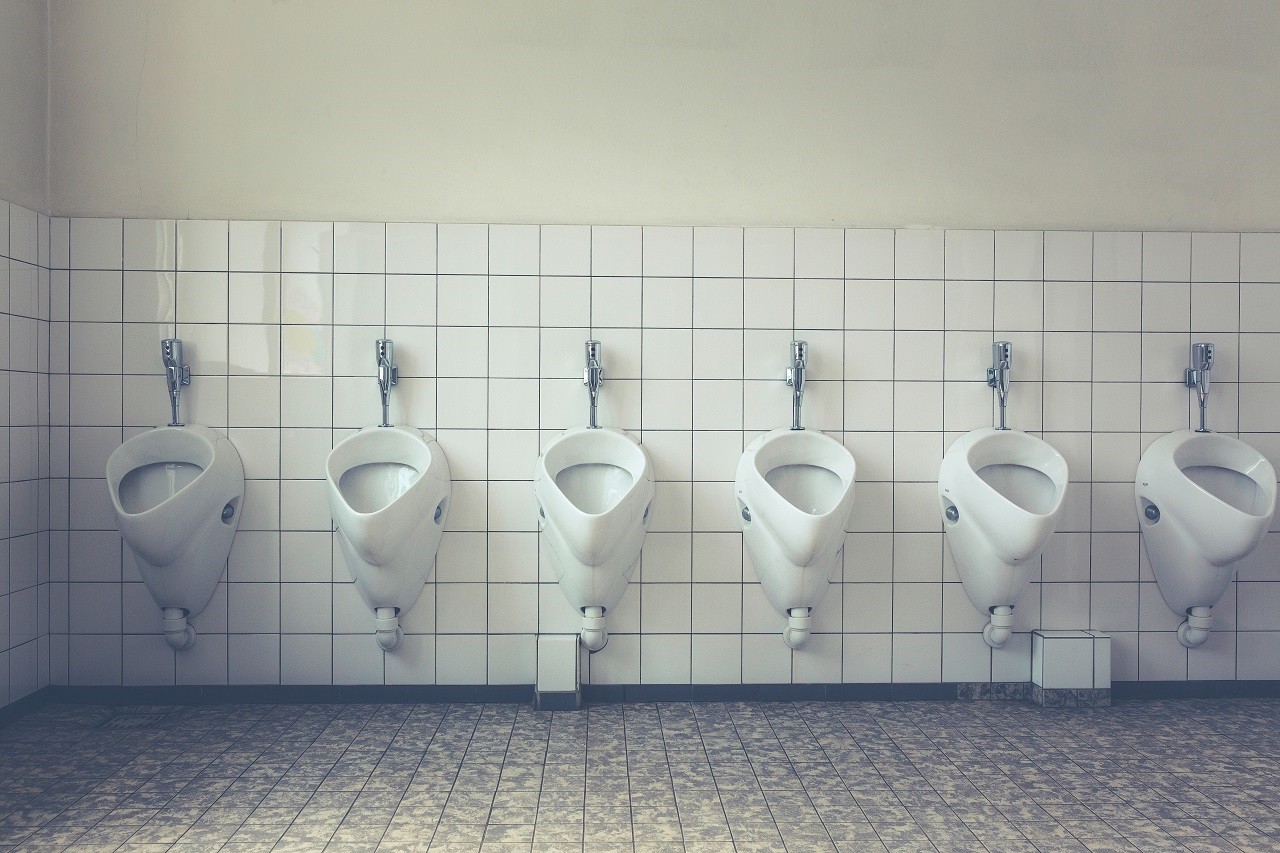
Even before the pandemic, the rule of social distancing from other urinal users has applied in men’s restrooms.
Image credit: Markus Spiske/Pexels
On top of this, thanks to what’s best described as the open design of many public restrooms, using a urinal often leaves users feeling too close for comfort to their fellow toilet-goers despite the distance between each urinal.
Ducking into a closed, but filthy toilet cubicle and risking even more wudhu-cancelling pee and stains there isn’t the most pleasant prospect either.
A urinal designed for cleanliness and privacy
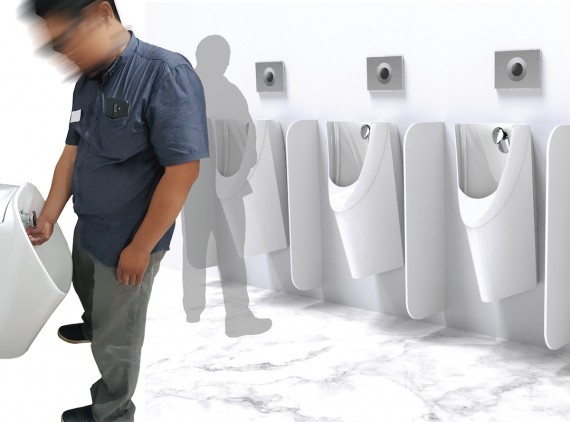
Kohler and Somia Customer Experience’s prizewinning urinal design
Image adapted from Kohler and Somia Customer Experience
On 6th February 2021, Kohler and Somia Customer Experience’s istinja-friendly urinal design emerged as the winner in the Disrupting and Optimizing category of the 2021 Interaction Awards, given to inventions for “re-imagining existing systems via new behaviors, usages, or markets.”
This urinal design is the product of designers’ extensive research over 3 years in Indonesia, during which they interviewed and invited 30 Muslim testers in suburban Jakarta, including 2 Muslim experts, to use different versions of the urinal design and provide their feedback.
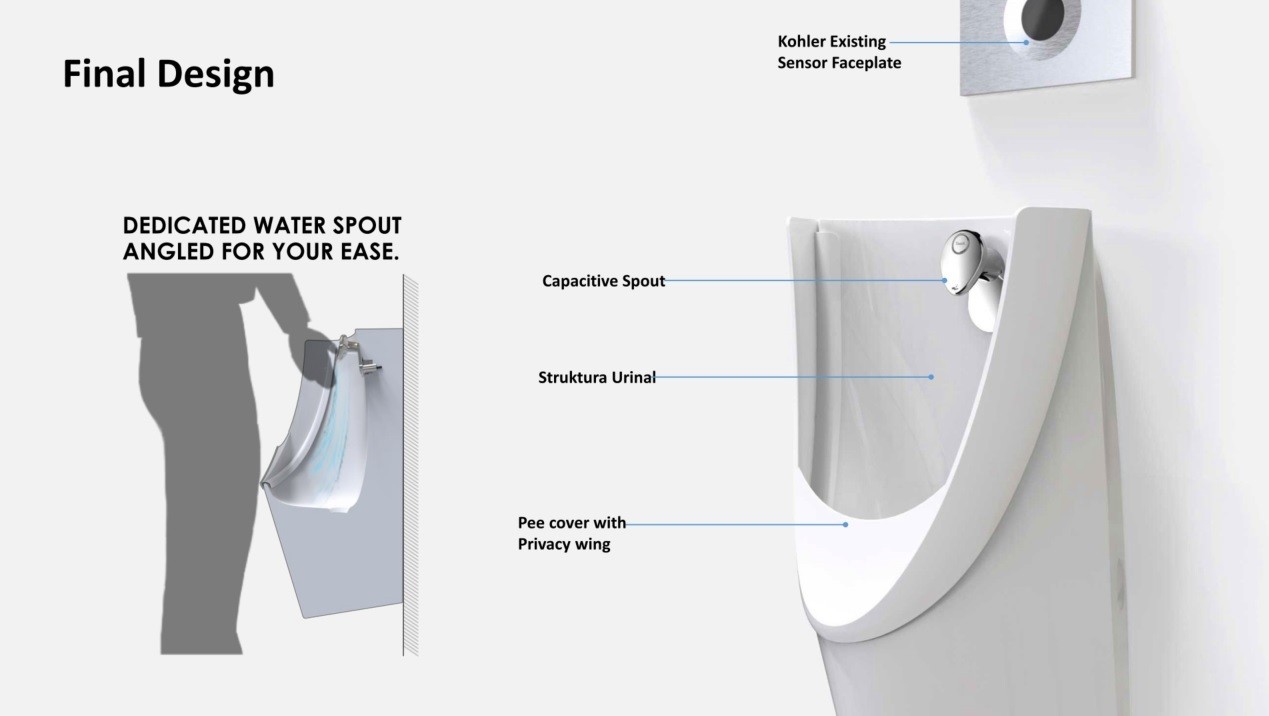
Image adapted from Kohler and Somia Customer Experience
Interestingly, the testers requested a touch button rather than a hands-free sensor on the top of the urinal. This button better allows the user to control the spout mechanism that would gently release water like a slow waterfall, minimizing splashes. It’s also more hygienic than touch-free sensors that can easily be triggered by accident, much like automated toilet bowl flushes, causing splashes of water – or even pee – that can invalidate one’s wudhu.
The spout is also separate from the flush mechanism, so that water for cleaning oneself is not mixed with water for cleaning the urinal after use.
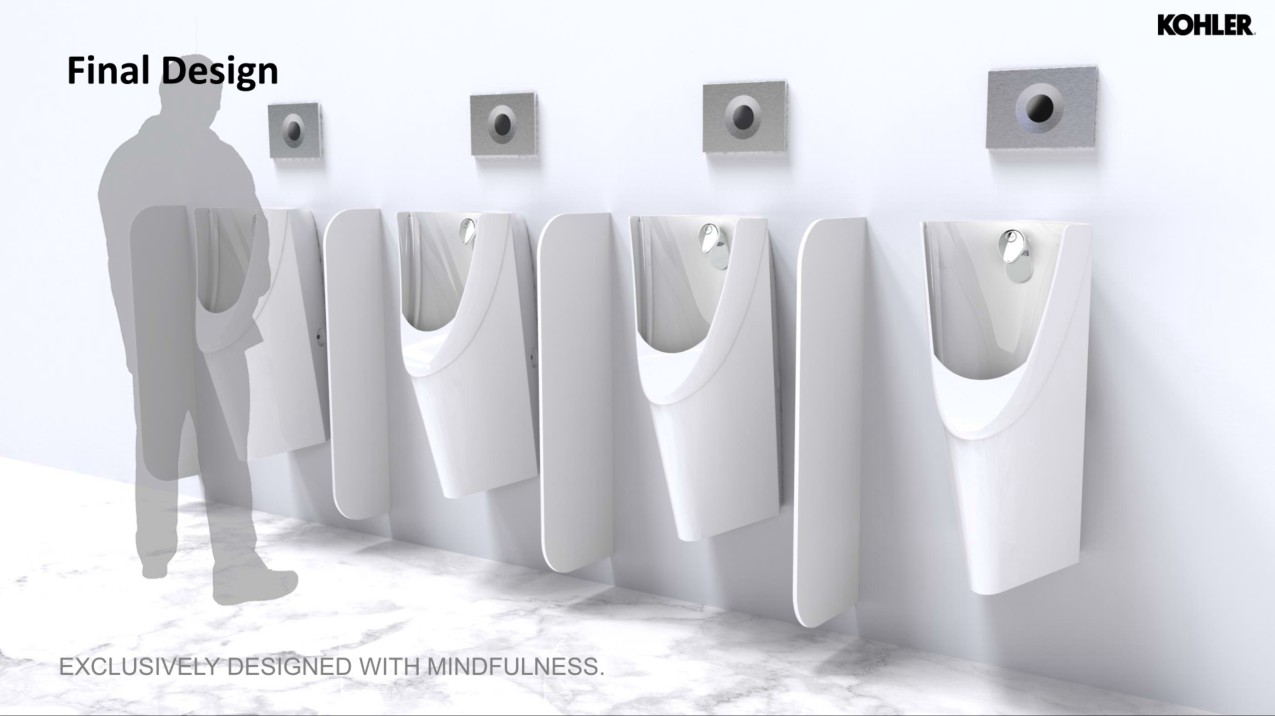
Image adapted from Kohler and Somia Customer Experience
Researchers also did away with a conventional transparent urinal shield, instead offering an ergonomic, angled urinal structure with privacy barriers that allows the user to stand closer for privacy and convenience. To top it off, the urinal design features an air freshener that keeps the air smelling pleasant after every use.
The result – a urinal for personal cleansing that helps Muslims fulfill their prayer requirements more efficiently, and for non-Muslims to enjoy a more hygienic public restroom experience too.
Istinja-friendly urinal developed in Indonesia
As the country with the world’s largest Muslim population of around 225 million people, Indonesia is where pre-prayer cleansing rituals are a big part of life.
Perhaps this istinja-friendly urinal design may just become the next big thing in Indonesian restrooms along with the much-loved bidet. And if it ever goes global, Indonesians can have bragging rights that this revolutionary design and modern solution for getting squeaky clean before prayer was developed in our humble archipelago.
Cover image adapted from Desolation_Z, Kohler, and Somia Customer Experience
Enjoying The Smart Local Indonesia? Follow us on Facebook, Twitter, and Instagram for more stories like this. If you have a story to share, email us at [email protected].
